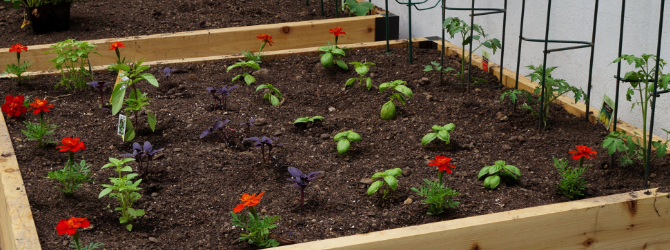Growing your own vegetables is a great way to grow your own food, cut down on expenses at the market and know exactly what you’re eating and how its’ been grown. It is not only self-satisfying to see your efforts produce a bountiful harvest, but homegrown vegetables taste better because they ripened on the plant and weren’t picked in an immature state before they reached their ultimate stage of tastiness.
Gardening in raised beds has an array of advantages and you don’t require a large area to use one. Even those with smaller spaces can grow crops in a raised bed.
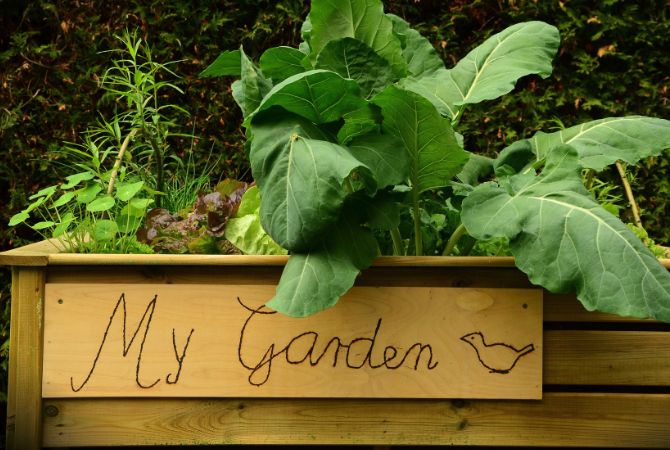
What is a Raised Bed?
Raised gardening beds are freestanding beds constructed so they are above ground level and the natural terrain. The “raised” portion means the soil in the bed is elevated above the natural soil, and the “bed” portion indicates that the area is small enough to tend without having to walk through the garden.
To make the raised bed manageable, you want to keep the bed approximately 1.3-meters wide so you have the ability to reach all areas inside. The length can be as long as you desire or what the specific area can handle. To allow adequate space for the development of roots, maintain a soil level inside the bed of approximately 30-centimeters.
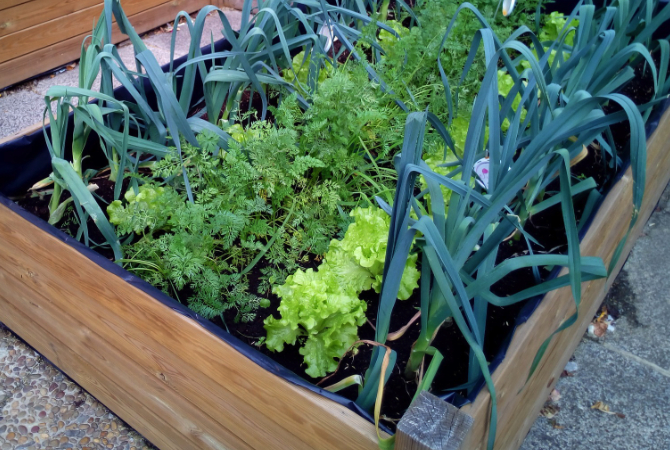
Benefits of Gardening in Raised Beds
Growing your vegetables in a raised bed has many benefits that aren’t always available when growing your crops in native soil directly on the ground. This is especially true if your native soil conditions are poor. Benefits of raised bed gardening include:
Improved Soil Conditions:
- If your native soil has a tendency to retain water and not drain properly, gardening in a raised bed solves this problem. The raised bed rises above the area retaining water and allows the soil to drain, which reduces the problems of root rots due to conditions that are too wet. Plant roots are raised above the saturated conditions.
- When native soil is poor and lacks nutrients or is contaminated, gardening in a raised bed allows you to use fertile soil to grow your crops. This cuts down on the work required to amend native soils by digging organic materials into the area. Less work allows more time to enjoy the garden.
- Because you aren’t walking over the soil in the garden you don’t have problems of soil compaction, which affects drainage and plant yields. This allows the proper circulation of water and air through the soil.
Larger Yield of Crops
- Since you are gardening in improved soil conditions in a raised bed, you will naturally have higher yields. When gardening directly in the ground you require more space between rows to allow room for walking between crops. Growing in a raised bed alleviates this problem and allows you to grow more plants in a smaller space, which leads to a higher yield.
Easier Accessibility
- Besides the plants being easier to reach with your arms, raised beds, work well for those with back problems, children helping in the garden and those with handicaps or using a wheelchair. There is no limit on the height of your raised bed, so making one approximately 1-meter tall or even a bit taller, allows easy access to those in a wheelchair or children. If you have back problems, having a taller raised bed, puts less stress on your back because you don’t have to do all the bending to get to your vegetables.
Easier Maintenance
- Gardening in raised beds makes maintaining them easier in a variety of ways. They reduce the need for all the bending and stooping if raised to an appropriate height. Raised beds generally have less problems with weeds because you can plant closer by eliminating the walkways and the greater density of vegetables used shade the soil, which help reduce unwanted weed growth. Using an organic mulch in the bed not only helps conserve moisture, but also helps reduce weeds.
- Controlling pests is easier and if you have problems with rodents like mice or rats and moles burrowing into your garden beds, line the bottom of the raised bed with hardware cloth or wire used for poultry to keep the critters out. If birds like to peck at your vegetables such ripening tomatoes or strawberries, attaching bird netting and frames to the raised bed frame is simpler. The frames also make it easier to stretch protective material over them to protect your crops from unexpected frosts or freezes.
Conserving Water & Disease Reduction
- Raised beds are the perfect garden bed to use drip irrigation or soaker hoses that water the base of your vegetables. Since the beds are long and narrow compared to regular garden beds, you don’t require as much material to keep the bed’s soil properly watered.
- Getting water on the vegetable’s foliage can lead to various fungal diseases, especially if the moisture doesn’t have time to thoroughly dry. Therefore, using soaker hoses or drip irrigation in the raised beds reduces the possibility of your vegetables becoming infected with fungal or disease problems.
Materials for Creating a Raised Bed
There is a wealth of materials suitable for creating a raised bed and what you use can depend on what style you are going for. This is a great time to look around the house and recycle some of those unused materials you might have lying around, which keeps them out of the landfill and is a greener way of gardening. You can tie your raised bed into the landscape by using materials that compliments each other. If you’re short on space or only have a balcony or patio area to garden, using half barrels work well in creating a small raised gardening space.
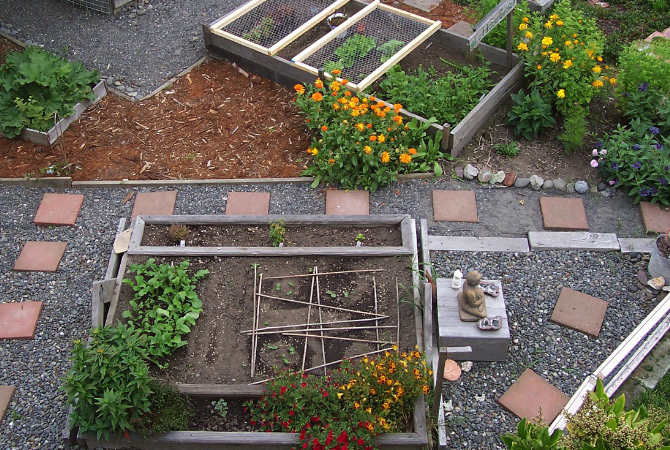
Some of the materials you can use to construct your raised bed include:
- Concrete blocks
- Bricks
- Stone
- Rot-resistant woods such as cedar
- Synthetic wood made from recycled plastic
- Treated landscape planks
- Untreated railroad ties
Caution: Avoid using any type of lumber treated with pentachlorophenol or creosote, as it can leach into the soil causing injury to your vegetable plants. Older landscape planks and railroad ties were treated with products containing arsenic, so use newer produced products that don’t contain the harmful substance.
If unsure of what the wood material you are using for the raised bed is treated with, place a heavy-duty piece of plastic between the wood and the soil to keep the vegetable roots from interacting and having direct contact with the wood.
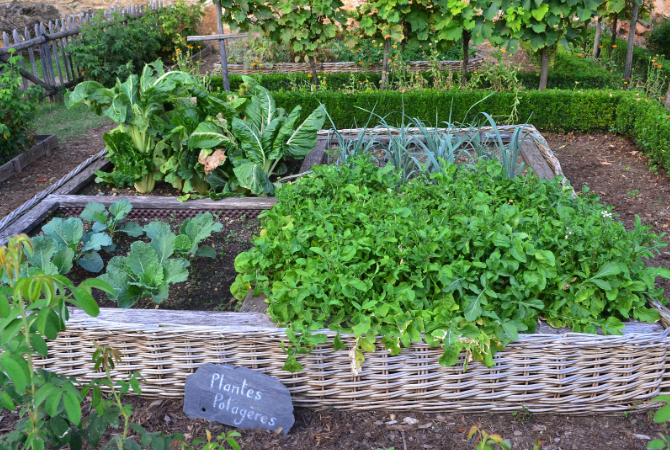
Suitable Vegetables for Raised Bed Gardening
Depending on the length of your raised bed, you can grow a variety of crops that should keep your family eating fresh vegetables almost year-round. However, crops such as melons, trailing-type squashes and corn take up quite a bit of space for proper growth. Growing these type of vegetables in the raised bed reduces the amount of space you have for other crops. Therefore, you can either have additional raised beds created specifically for these space-suckers, or grow them in the ground.
Otherwise, crops such as lettuce, tomatoes, beans, peppers, radishes, eggplants, strawberries and bush type beans do well in raised beds. If growing climbing types such as beans or cucumbers, it’s easy to install a trellis in the bed.
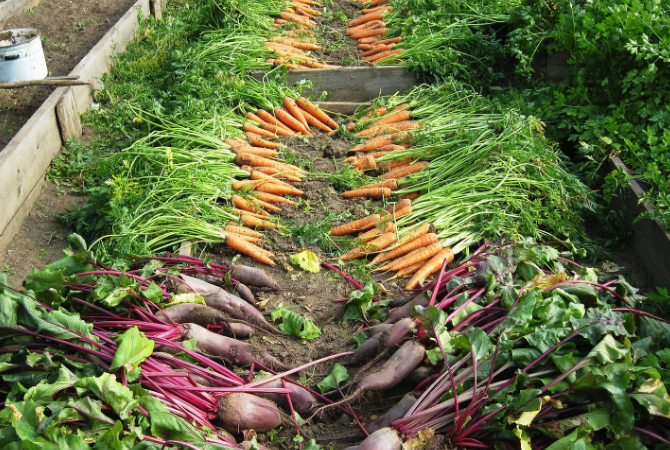
Growing in a raised bed makes vegetable gardening easier and reduces the amount of work, which makes the entire process more enjoyable. It is also a good way to introduce children to growing food and making it fun. You can also reuse the raised bed for years to grow your crops. Keep the bed close to the house so you will see it and be more likely to go out and tend your crops. Before you know it, you’ll be enjoying your bounty of freshly harvested vegetables and you didn’t need a large yard for the garden.
